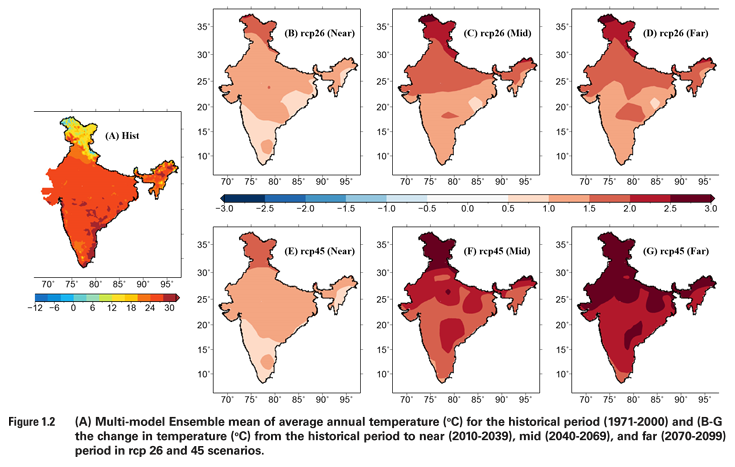Nearly 50 per cent of India facing drought as groundwater depletion increases – “We are not enhancing groundwater recharge, and drought conditions are making us extract more and more water”

GANDHINAGAR, 28 February 2019 (Press Trust of India) – Nearly 50 per cent of the country is currently facing drought with at least 16 per cent falling in the “exceptional” or “extreme” category, according to IIT Gandhinagar scientists managing India’s real time drought prediction system.
This ongoing drought will pose a lot of challenges in water availability this summer, Vimal Mishra, associate professor at the Indian Institute of Technology (IIT) here, told PTI.
The real time monitoring system run by his team, which includes PhD student Amardeep Tiwari, collects weather and precipitation data from the India Meteorological Department (IMD), which is then used to simulate soil moisture and other factors that contribute to drought.
The results of the simulations, prepared by the Water and Climate Lab at IIT Gandhinagar, are available on the website of the India Meteorological Department (IMD).
“About 47 per cent of the country is facing drought — with 16 per cent facing extreme, or exceptional category of drought — which we show from our real time monitoring system that we have developed for the country,” said Mishra, who heads the lab.
“Arunachal Pradesh did not get good rain this year, and parts of Jharkhand, southern Andhra Pradesh, Gujarat, and northern part of Tamil Nadu are under drought,” Mishra said.
If these areas experience very hot summer before the onset of monsoon, it could lead to a crisis, he warned.
According to him, continuing drought will further burden the already depleting ground water resources of the country.
“We are not enhancing groundwater recharge. On the other hand, drought conditions are making us extract more and more water,” he said.
While famine like conditions are not expected, the drought will have a massive impact on the economy.
“It can create long-term stress, if not mortality for poor, marginalised farmers,” Mishra said.
The scientist said global warming and climate change are likely to exacerbate drought in the coming years.
“If our groundwater is not recharged and managed sustainably, we could face a very difficult situation in the coming years,” Mishra said, adding that groundwater is being used irresponsibly at present.
“You can reduce groundwater by selecting appropriate crops. If we already have depleted groundwater we should not grow water intensive crops. For example, Punjab should not be growing rice,” Mishra said. [more]
‘Nearly 50 per cent of India currently facing drought’

ABSTRACT: In the background of the expanding population and dwindling water resources together with the risks posed by climate change, it is essential to quantify available and potential water resources of the country and the possible impacts of climate change on the existing resources. Here we provide a brief account of different water resources, their availability, potential, the implication of climate change on water availability, demands, and water use in various sectors. We also study the projected changes in precipitation and air temperature under the warming climate in India and their potential implications. India is endowed with numerous surface water resources and groundwater aquifers. However, these resources are not effectively utilized leading to over exploitation in certain areas and under development in the rest. Climate change driven increase in extremes, droughts, and increased irrigation requirements, can further reduce the water availability in India. The existing reservoir capacity may not be sufficient to accommodate floods driven precipitation extremes under the warming climate. Similarly, groundwater storage is likely to get affected due to excessive pumping to meet increased irrigation water requirements. In the future, along with the agriculture sector, burgeoning water demand from the industrial sector and rapid urbanization may aggravate water stress in rapidly developing India. Moreover, a significant portion of our available water resources is severely polluted. To meet the future water demands, we need to come up with water-efficient technologies, reuse and recycling of wastewater, along with the strategies to sustainably use water resources.
Water Resources Under Changing Climate in India: An Overview